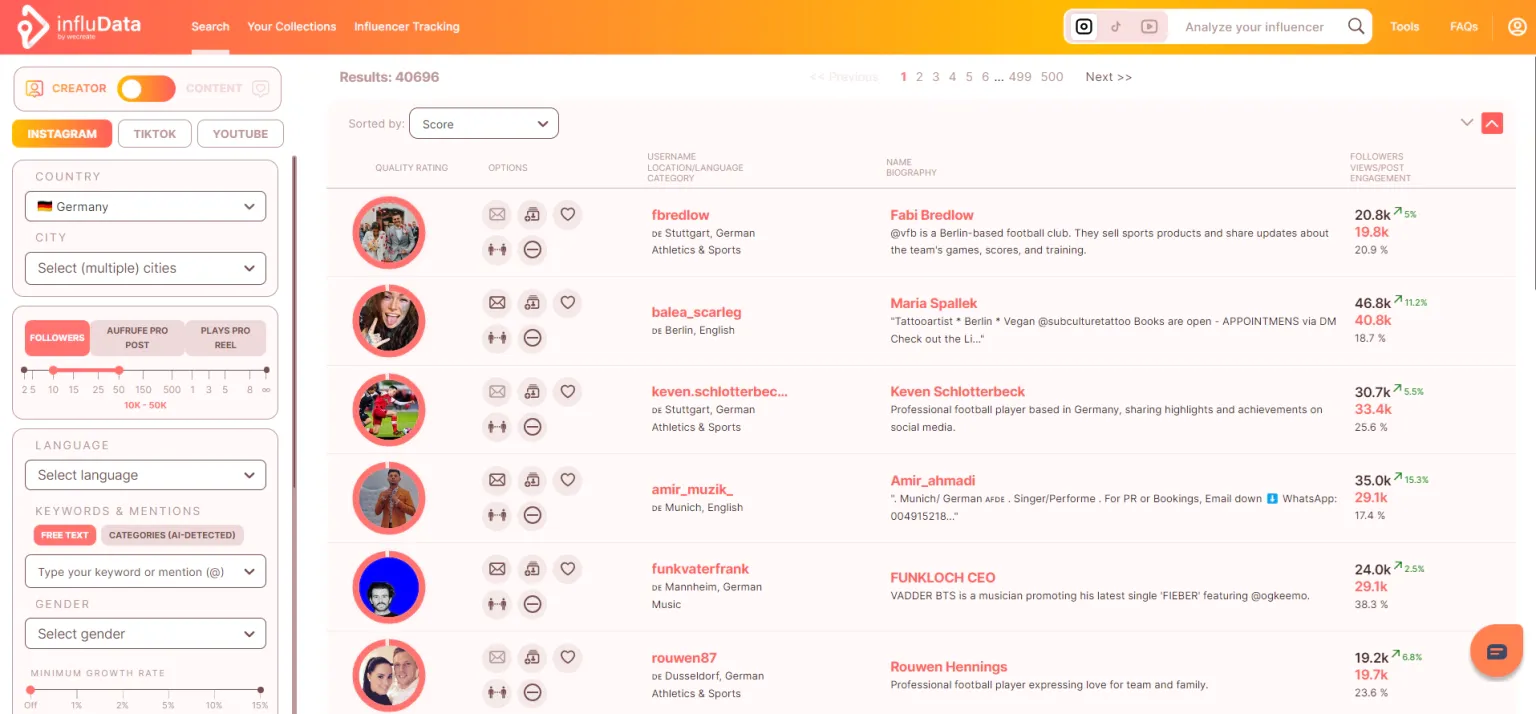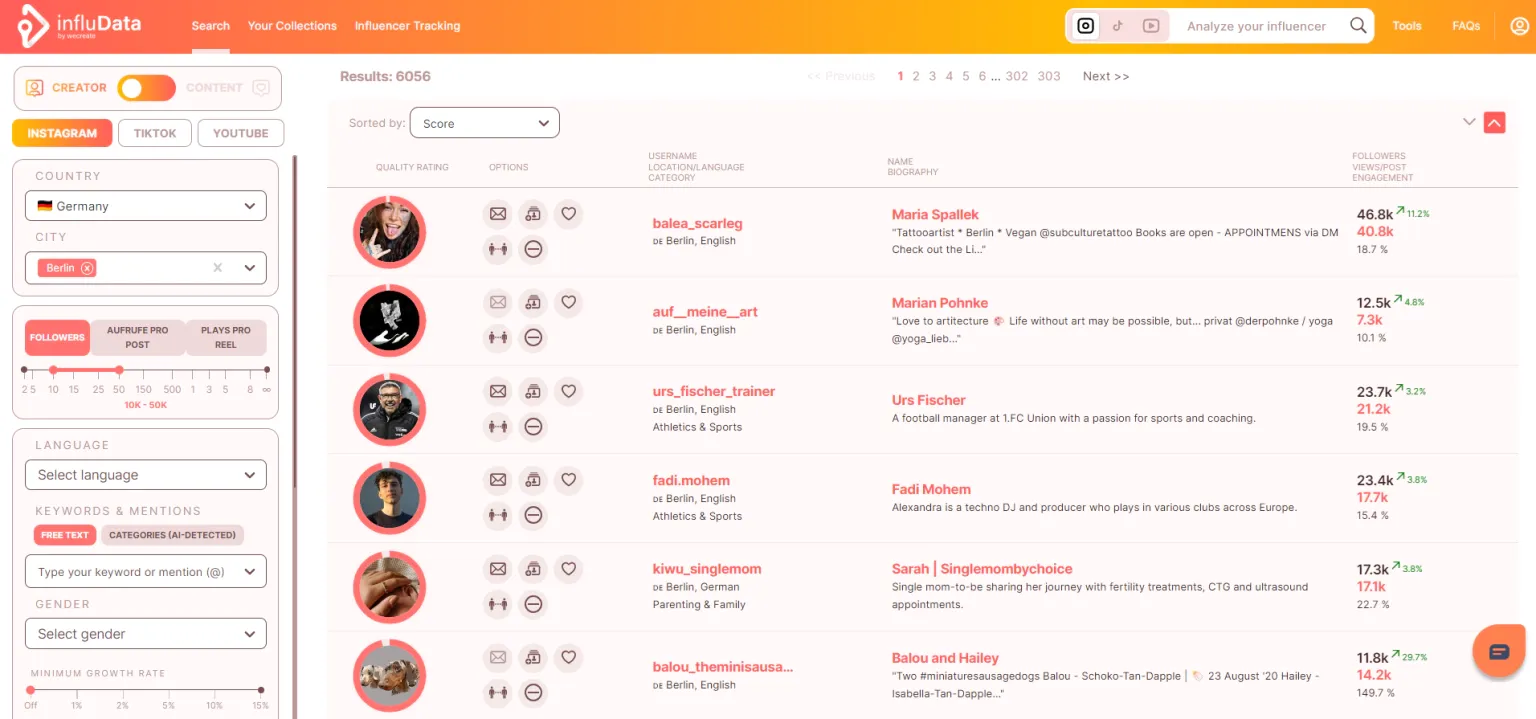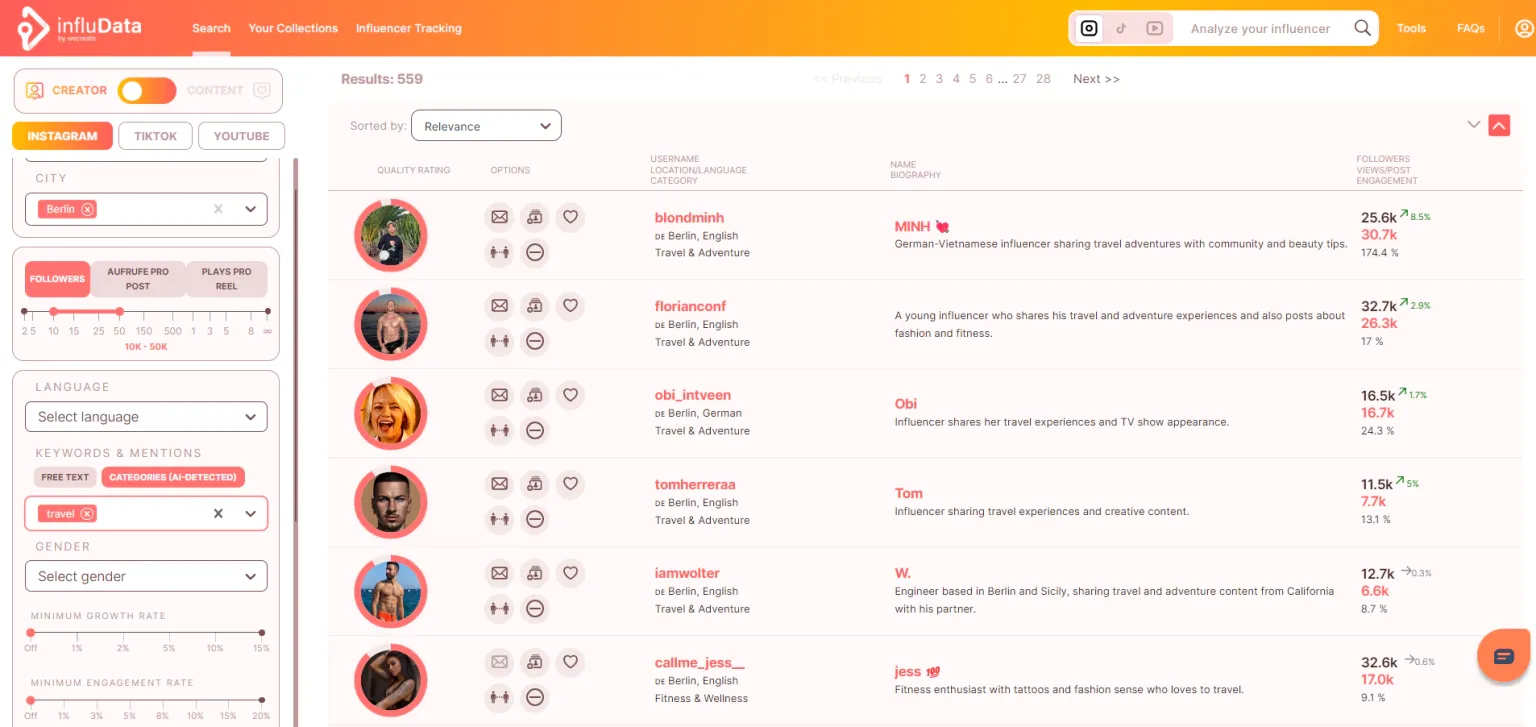
Reading time: 11 minutes
What is a micro-influencer and why do micro-influencers make for a winning influencer marketing strategy?
In the past, when people claimed that they had been achieving record breaking ROI’s by partnering with micro-influencers for their marketing campaigns, the marketing community viewed these claims with a large amount of skepticism.
Seriously, it may seem implausible to achieve substantial results with influencers that don’t have a large following and therefore have a comparatively narrow reach. But as an increasing number of brands ventured into micro-influencer marketing, the results began to speak for themselves. Running micro-influencer campaigns can be a highly effective way for brands to increase awareness, build trust and boost their sales, while also making sure they’re not spending a fortune.
If you’re grappling with indecision about whether partnering with micro-influencers is the optimal strategy for your business, rest assured that we’ve got you covered. In this blog post, we’ll understand what micro-influencers are, lay out the benefits of working with them, and how you can find the right ones for your business. Let’s dive straight into it.
Table of Contents:
- Understanding micro-influencers
- 3 successful micro-influencer marketing campaign examples for inspiration
- Micro-influencer marketing is powerful – But make sure you work with the right creators
- How to find micro-influencers with influData
- Conclusion
Understanding micro-influencers
Micro-influencers are creators with a small follower or subscriber base, but sources vary in regards to their follower range.
For instance, according to HubSpot, micro-influencers are influencers with followers between 1,000 and 10,000 on social media. As stated by Scrunch, micro-creators are influencers that have anywhere around 2,000 – 50,000 followers on social media. Buffer, in one of their blog posts, mentioned that micro-influencers are influencers with less than 10,000 followers.
In contrast to that, Influenceme defines Micro-influencers as Creators with 10,000 – 50,000 followers. Social Media Today also has them defined with an audience of 10k – 50k.
As you can see, it’s all over the place. For purposes of this article, we will define them with a range of 10,000 – 50,000 followers, with Nano-Influencers being the next smallest class (everything below 10,000 followers) and Mid-Tier-Influencers having an audience of more than 50,000 but less than 100,000 people on Social Media.
Talking about money: Micro-influencers don’t charge as much as mid-tier, macro, or mega-influencers do. According to Influencer Marketing Hub, micro-creators charge for example:
| Instagram post | $100 – $500 |
|---|---|
| YouTube video | $200 – $1,000 |
| TikTok video | $25 – $125 |
| Twitter post | $20 – $100 |
| Facebook post | $250 – $1,250 |
Whereas, mid-tier, macro or mega/celebrity-influencers charge:
| Mid-Tier-influencers | Macro-influencers | Mega/Celeb-influencers | |
|---|---|---|---|
| Instagram post | $500 – $1,000 | $5,000 – $10,000 | $10,000+ |
| YouTube video | $1,000 – $10,000 | $10,000 – $20,000 | $20,000+ |
| TikTok video | $125 – $1,250 | $1,250 – $2,500 | $2,500 |
| Twitter post | $100 – $1,000 | $1,000 – $2,000 | $2,000 |
| Facebook post | $1,250 – $12,500 | $12,500 – $25,000 | $25,000, |
But that’s not the only reason why brands should consider working with micro-influencers. Micro-influencers have far better engagement rates than their larger counterparts. Here’s proof:
Upon analyzing more than 10.4 million Instagram and 4.8 million TikTok influencer profiles, the influData team found out that influencers with fewer followers have higher engagement rates than ones with a larger number of followers. The median engagement rate for micro-creators on Instagram for example is more than 1%, whereas the one of bigger influencers is below 1%. On TikTok, micro-influencers have a median engagement rate of 9.7%, whilst influencers with a larger following just have an engagement rate of under 9%. Moreover, micro-influencers post more frequently and thus keep their audience engaged.
With a median of 10 posts per week on Instagram and 5 videos on TikTok, they are posting much more frequently than bigger influencers, who are posting around 3 – 6 times per week on Instagram and 3 – 4 times per week on TikTok. Similarly, several other benefits of working with micro-influencers are:
- They have a more targeted audience: Micro-influencers have a targeted following. Their followers are more likely to interact with their posts than those of large influencers. This is one of the main reasons behind their higher engagement rate compared to other influencers.
- They are seen as authentic and trustworthy: Micro-influencers don’t have millions of followers they need to tailor their content for. Due to their smaller following, micro-creators are often seen by people as authentic, relatable, and trustworthy, leading to higher levels of trust and loyalty. Also, they are niche experts – which means if you work with micro-influencers in your niche, you’re more likely to achieve better results. Their followers are less likely to think that the products they are promoting are paid endorsements.
- They have a healthy relationship with their followers: One of the benefits of a smaller following is that you can interact with your followers individually. However, that’s not the case with large influencers – who are unlikely to respond to every single comment or direct message. Since micro-influencers can better interact with their audience, they have healthy relationships with them, contributing to their high engagement rates. At the end of the day, engagement matters, not the number of followers. It’s important that the audience actively sees the content with the brand product or service and interacts with it. Additionally, keep in mind that when it comes to larger creators, the proportion of fake followers and inactive profiles usually increases.
- They can offer dedicated time to campaigns: Despite the long list of benefits of working with micro-influencers, so many brands still prefer to collaborate with influencers with large followings. But these influencers often don’t really have the capacity to give dedicated time to campaigns due to their workload they have with their other tasks and campaigns. Also, it’s likely you’ll not be interacting directly with them, instead have to talk with their management or agency team. On the other hand, micro-influencers have a smaller number of brand partnerships, which means they have smaller workloads. So, it’d be possible for them to dedicate more time and effort to creating content for your brand’s campaigns as well as take into account your ideas and wishes.
As you can see, working with micro-influencers is beneficial. However, it’s important to make sure you’re working with ones in your niche and ones that fit your requirements. If you run a fitness brand, then it doesn’t make sense to work with micro-influencers in the food industry unless you’re selling a related product like healthy snacks. It’s important to make sure that the micro-influencers you’re working with have a similar audience that you’re looking to target.
That being said, let’s look at a few examples of successful micro-influencer marketing campaigns for inspiration.
3 successful micro-influencer marketing campaign examples for inspiration
Here are three successful micro-influencer marketing campaigns that yielded exceptional results:
- Vivo X50 Campaign on Instagram
- Lumene’s Finland Instagram campaign to promote its new product line
- Cuts Clothing’s micro-influencer marketing campaign to increase their awareness on TikTok
1. Vivo X50 Campaign on Instagram
Vivo, a popular Chinese smartphone manufacturer, wanted to build awareness around its newly launched X50 smartphone in Singapore in collaboration with X10 Media. So, they decided to collaborate with key micro-influencers that created posts that resonated with their audience.
Rather than collaborating with hundreds of influencers (Vivo was conscious about flooding the market and damaging their reputation), they worked with only 20 hand-picked micro-influencers. In collaboration with these micro-influencers, they rolled out a total of 60 unique posts (with no influencer posting the same content). And the results were truly outstanding. The total reach of the campaign surpassed 350,000. As stated by Vivo, their campaign exceeded their desired engagement rate by more than 250%. The campaign garnered 27,000+ likes, 22,000+ story views, and more than 1,500 comments.
Summing it up, working with micro-influencers turned out to be a profitable option for Vivo.
2. Lumene’s Finland Instagram campaign to promote its new product line
In 2021, Lumene collaborated with several micro-influencers to promote its new product line in Finland. These influencers were asked to create:
- A regular feed post
- One carousel post
- Two stories
Lumene compensated these micro-influencers with a product package worth €120 each. With a total of 264 pieces of content created, the campaign reached more than 156,000 people, with more than 21,000 likes and 3,000+ comments.
3. Cuts Clothing’s micro-influencer marketing campaign to increase their awareness on TikTok
Cuts Clothing is a clothing brand that specializes in sweatshirts, t-shirts, hats, and bottoms. In their effort to increase their awareness on TikTok and grow their social media presence, Cuts Clothing ran a product seeding campaign targeting nano and micro-influencers.
Cuts collaborated with over 15 micro-influencers to generate more than 30 TikTok videos – which helped them lower their cost per acquisition to less than $120. At the same time, the campaign garnered an engagement rate of more than 10%.
Micro-influencer marketing is powerful – But make sure you work with the right creators
Micro-influencer marketing campaigns, when planned and implemented correctly, can deliver outstanding results. As good as this marketing approach is, it’s important to make sure that you work with the right creators – who are the best fit for your brand.
There’s no point in working with beauty micro-influencers if you are in the finance niche or vice-versa. When vetting micro-creators, it’s important not to solely focus on the niche. There are also other factors to consider, such as audience demographics, engagement rate, quality of their content, past brand collaborations, and more. How can you do that?
Enter – an influencer discovery tool like influData.
With influData, brands can discover influencers through their 20 million profile-rich database to choose from. At the same time, their powerful filtering system helps brands narrow down their search based on their specific criteria.
Let us demonstrate how influData can help you find micro-influencers.
How to find micro-influencers with influData
Discovering the ideal micro-influencers to collaborate with can be a challenging task. However, with the assistance of influData, the entire process becomes effortlessly smooth and hassle-free.
Let’s say you want to find micro-influencers on Instagram based in Germany. To do that, all you need to do (after logging in to influData) is:
- Select the country as “Germany.”
- Set the platform as “Instagram.”
- Set follower count range between 10K and 50K.
influData fetched us 40,696 results.
Let’s narrow down our search further. Let’s say you want to find micro-influencers on Instagram based in Berlin, Germany. To do that, let’s additionally to the aforementioned criteria set the city as “Berlin”.
influData fetched us 6,056 results.
But what if you run a travel brand looking to run a micro-influencer marketing campaign to promote your new lineup of products? In that case, you may want to collaborate with travel influencers.
So, this means – we have to find travel micro-influencers on Instagram based in Berlin, Germany. To do that, we’ll further set our category as “Travel & Adventure.”
We got 559 results.
Depending on your needs and preferences, you can apply filters to discover the right micro-influencers to work with. Once you’ve applied the right filters, you can sort influencers by relevance, username, score, followers, views per post, engagement rate, and growth rate.
By clicking on a profile, you can dig deeper into the statistics, like an influencer’s follower history, potential fraudulent activities, authenticity rating, quality scores, engagement scores for different types of posts, growth rate, brand value, brand cooperation in a timeline, audience details (super important!) and a projected cost per post/story/reel.
You can also add them to collections or favorites and even compare them. Want to block some from your future searches? You can do that as well.
Last but not least, influData has the email addresses of so many influencers in their extensive database. While they don’t have emails for every single influencer in their database, they allow you to apply the “Must include email” – which will filter out influencers without emails in their database. Simple, isn’t it?
influData is one of the best influencer discovery and analysis tools on the internet.
Finding the right micro-influencers has never been easier.
Conclusion
Working with micro-influencers is a great way to reach your target audience, bolster your brand awareness and generate sales for your company. Due to their high engagement rate and their relatively low cost, they are ideal for any kind of cooperation. But be aware to choose a fitting micro-influencer for your brand, whose followers resemble your target audience and who is engaged in the same niche as your brand.
Similarly, working with nano-influencers is also a cost-effective yet highly effective strategy. Nano-influencers are even smaller in terms of their following. While their reach may be small, they possess a highly engaged audience that values and follows their recommendations. To know more about nano-influencers, we highly recommend reading our “Nano-influencers: what are they and why are they important?” article.
Click here to request a free trial.


